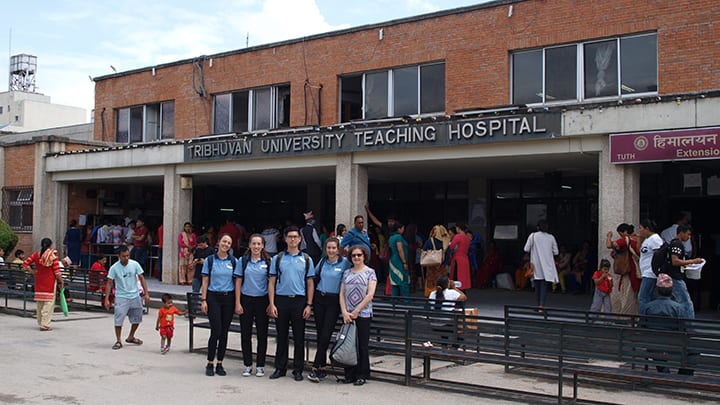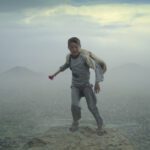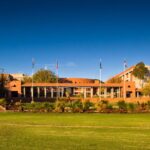During semester break, nine Physiotherapy students from the School of Physiotherapy and Exercise Science stepped off a plane into the riot of colour, sounds and smells that is Kathmandu, Nepal. It was to be home for the next month.
The students travelled to Nepal for a study tour.
The students were participating in the school’s popular Physiotherapy Abroad Study Tour, which offers final year students the opportunity to undertake a four week clinical placement in Kathmandu’s healthcare system.
Nepal, which has a population of approximately 29 million, is one of the poorest countries in the world. Many Nepalese people cannot afford to access the healthcare system, and public health programs are limited. Diseases such as polio and tuberculosis are still prevalent in Nepal, even though they have been largely eradicated in many other parts of the world. Access to healthcare is much more limited in rural and remote parts of the country.

Physiotherapy lecturer, Evan Coopes, who has accompanied students on the study tours for the past five years, said the overseas placements are challenging and worthwhile, and offer a unique learning experience, including lessons on the art of resilience in the face of fairly abject circumstances.
“Nepal is amongst the five poorest countries in the world, and this is very evident across all domains – infrastructure (including health care), income, health and social development indices to name but a few,” Mr Coopes said.
“It is also a culturally rich and very beautiful country. Its people are proud of their country and incredibly resilient in spite of the many barriers to development most people face.”

The students quickly became part of Kathmandu’s key health delivery services.
Once in the country, the students quickly become part of Kathmandu’s key health delivery services, undertaking placements at two major urban hospitals where they gain experience treating complex cases.
“Students are fully immersed in the Nepalese healthcare system including all of its vagaries, challenges, inefficiencies and inequities. One half of the group are placed at the physiotherapy department at Tribhuvan University Teaching Hospital, whilst the other half are placed at Nepal Orthopaedic Hospital,” said Mr Coopes.
“It is a placement where our students are confronted each day with the often harsh and ugly realities of healthcare provision in a developing country. They are involved in treating complex trauma and medical cases, made even more complex due to the all-too-common issue of delayed access to tertiary healthcare and/or inadequate primary healthcare. They are also exposed to many types of cases that are rarely, if ever, seen now in Australia, for example polio, untreated osteomyelitis and chronic tuberculosis to name but a few.”

Half of the students on the tour were placed at the Nepal Orthopaedic Hospital.
The many cultural and economic differences the students experience when first arriving in Kathmandu can be jarring initially. Curtin staff members are on hand to support them during their first few days in Nepal, as they became accustomed to all the country has to offer and the demands and rewards of their clinical placements.
“One to two staff accompany the students for the initial period of the placement, with the principal aim of ensuring that they all find their feet in what is a challenging cross-cultural setting,” Mr Coopes said.
“Staff also represent the School of Physiotherapy and Exercise Science at meetings with our clinical placement partners, with the aim of developing these critical relationships and to further develop the school’s Nepal study tour as an ongoing and viable placement opportunity.”

Students made friends with their Nepalese colleagues.
While on the tour, the students are based at a hotel in Thamel, a popular tourist hub in the heart of Kathmandu, where they return each evening to discuss the day’s events.
“Whilst Thamel should never be confused with the ‘real’ face of Nepal, it is important for our students to have a quiet and comfortable ‘home base’ to come back to each day. Students are involved in daily debrief/reflection sessions where many ‘oh wow’ moments are shared and discussed and, sometimes, anger, frustration and/or tears are shed,” Mr Coopes said.
Alongside their placements, students also have the opportunity to make friends with their Nepalese colleagues and the local community, explore Kathmandu’s vibrant culture and enjoy the natural beauty the country is renowned for.

The students participated in a number of cross-cultural activities, including two wedding celebrations.
“Almost all students take the opportunity to undertake a trek, and to visit other parts of Nepal. In recent years, the cross-cultural opportunities have been rich and varied. For example, during the 2017 placement, the student group were invited to and participated in two weddings, an elaborate celebration party at Nepal Orthopaedic Hospital (which included an election process to select union members to represent hospital staff) and attended a number of dinners hosted by their Nepali placement supervisors,” Mr Coopes said.
“The shopping, food and night-life in Thamel is also renowned and, unsurprisingly, our students make the most of these opportunities albeit with one eye on being ready to go for placement each day!”



